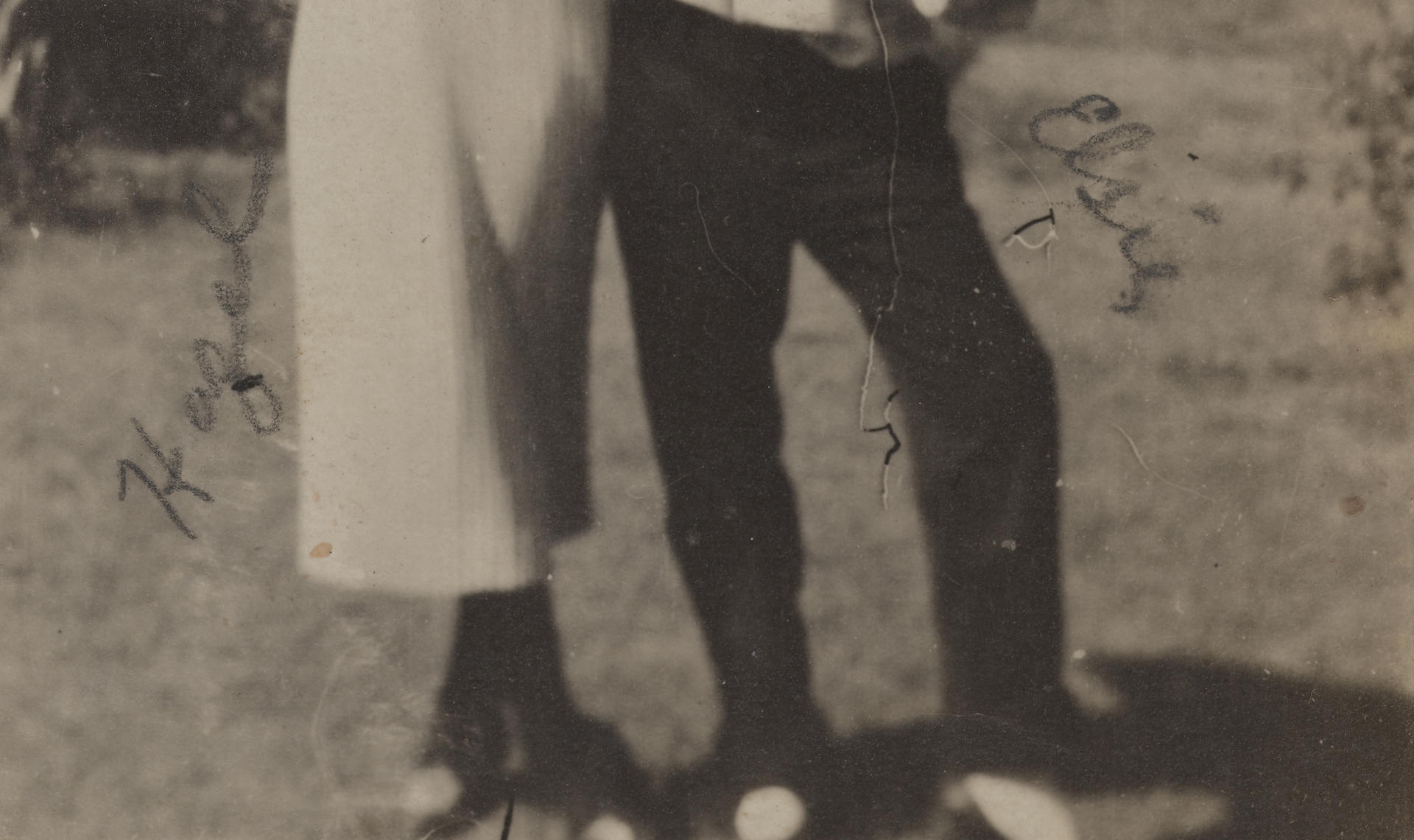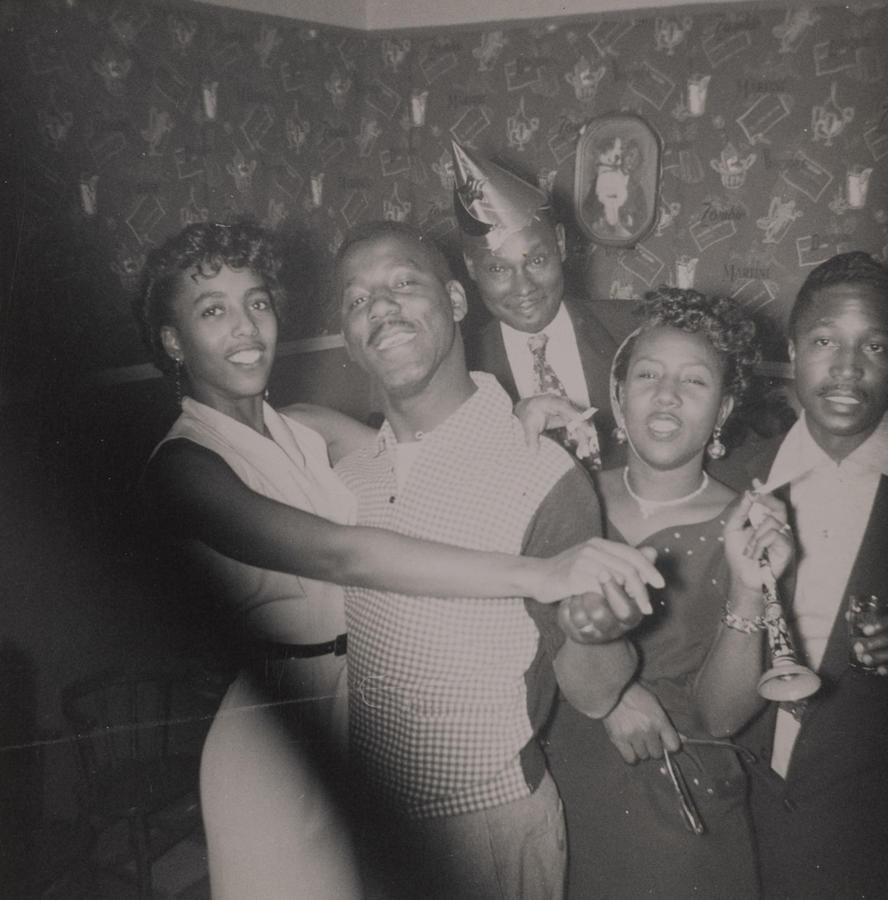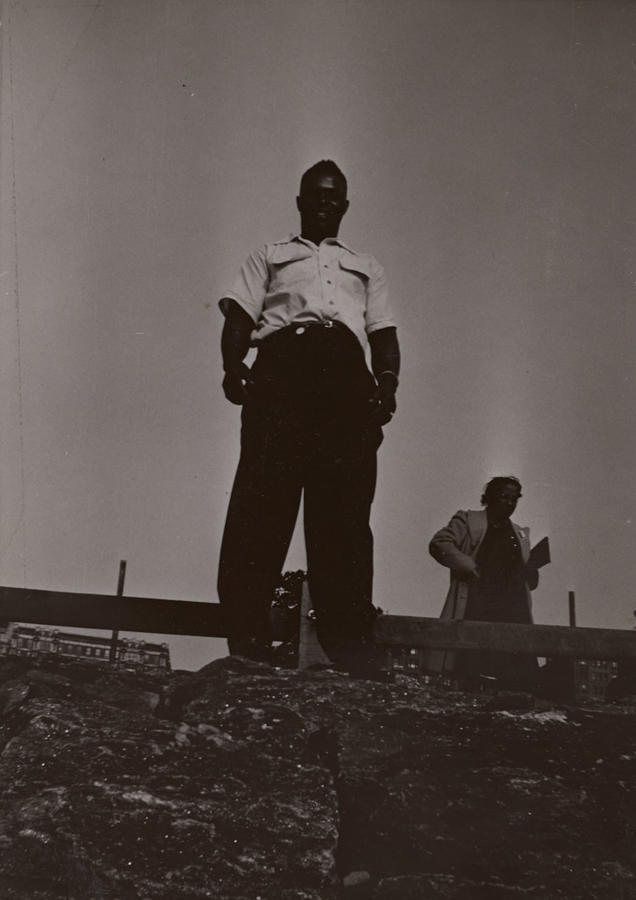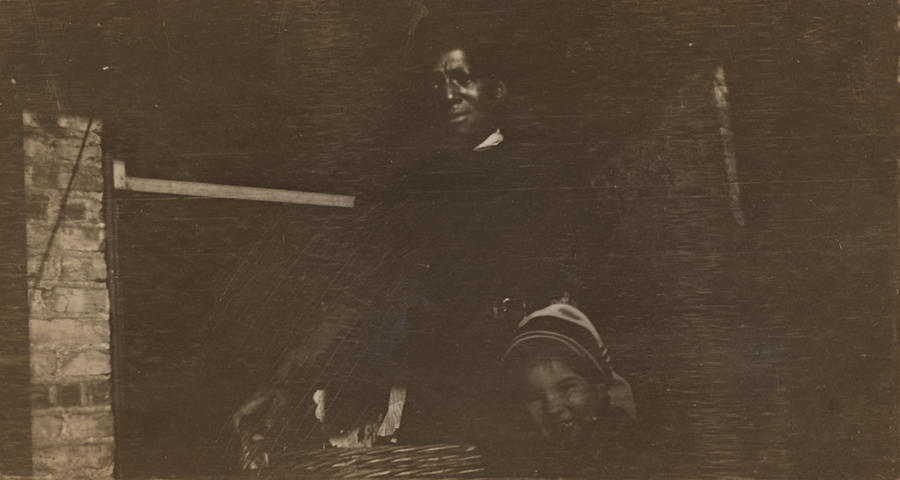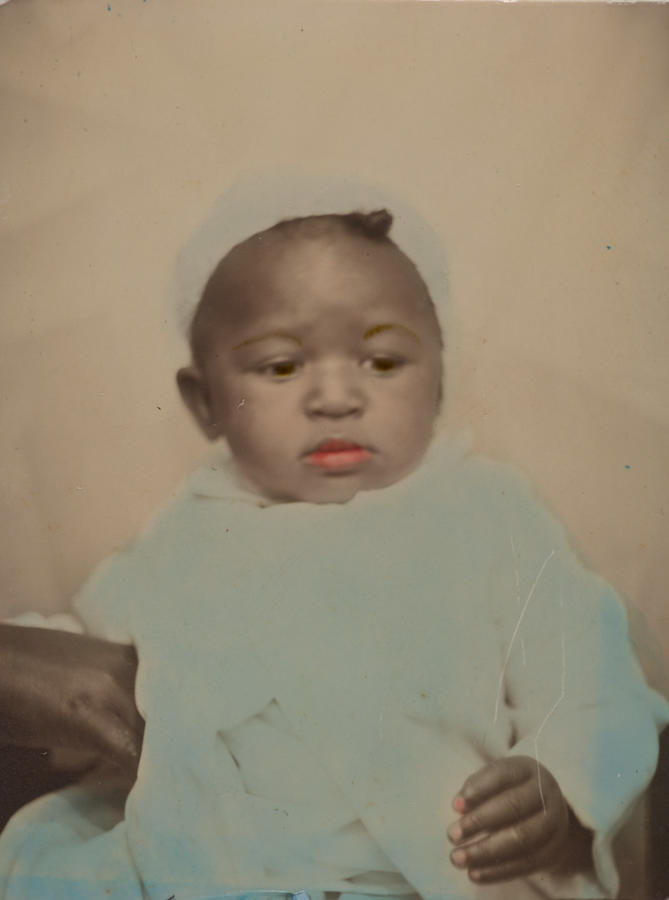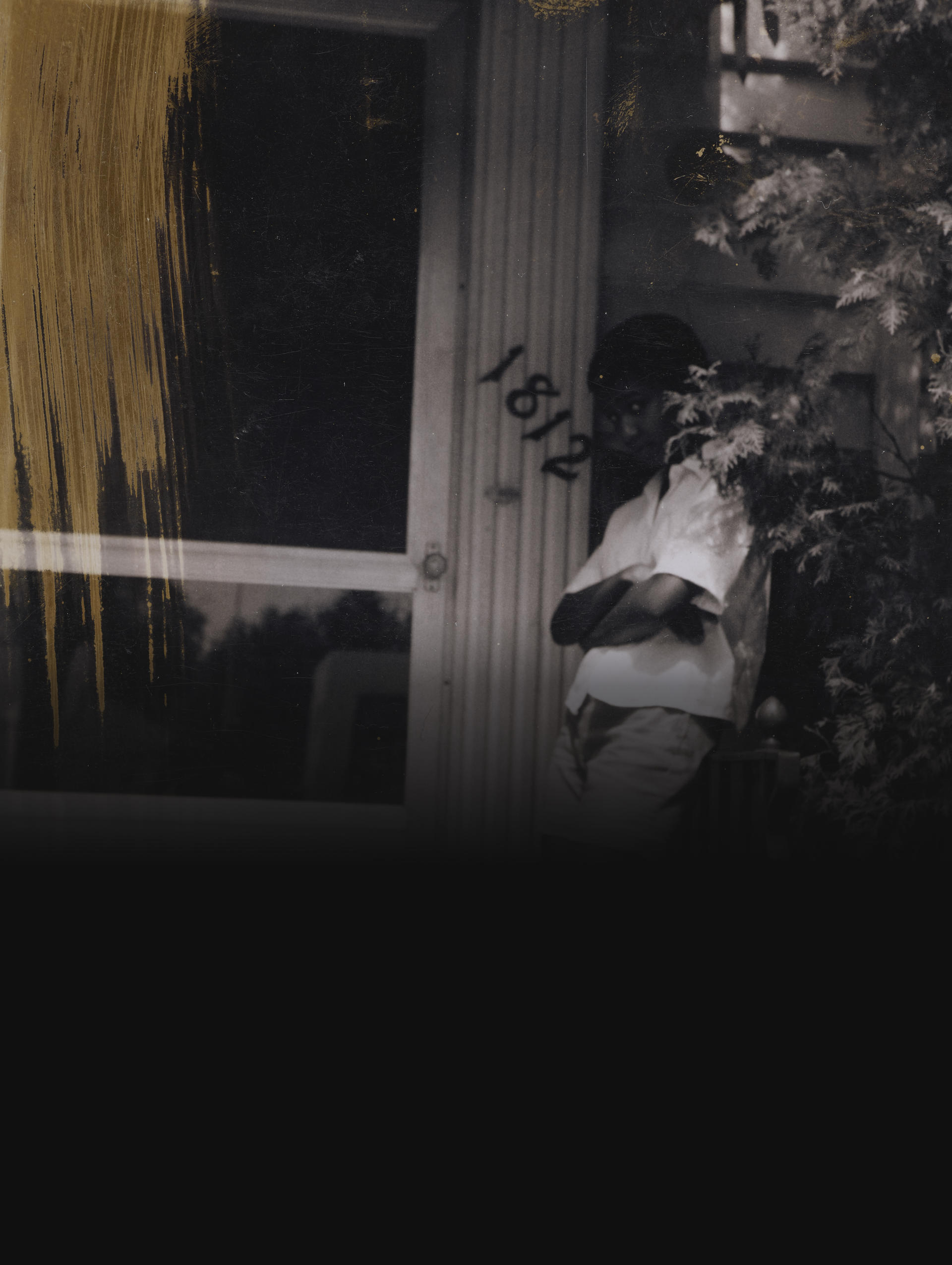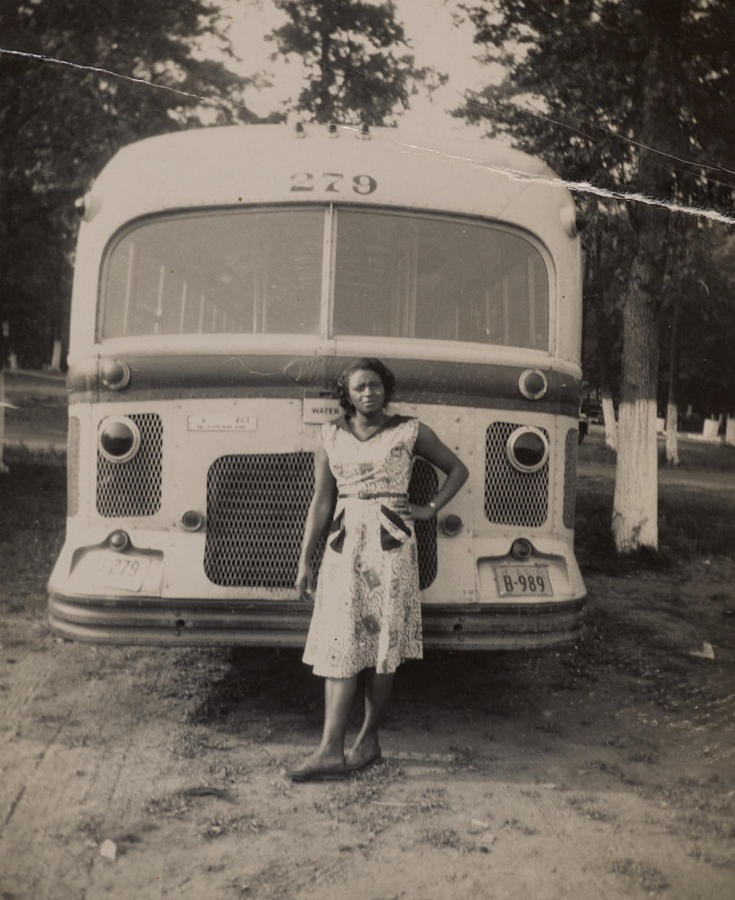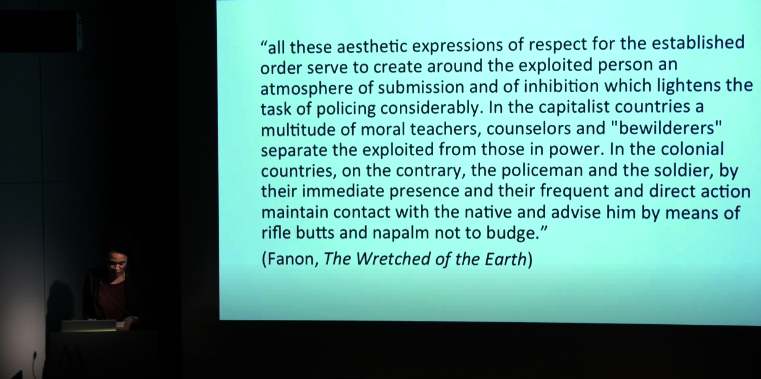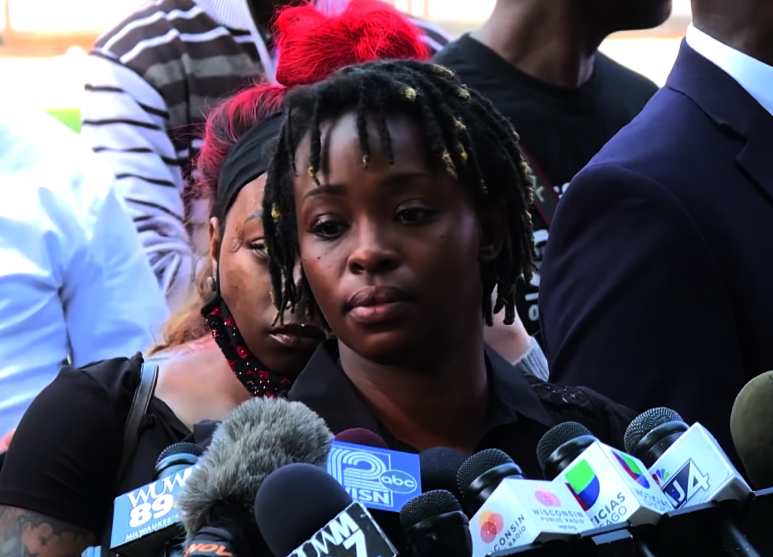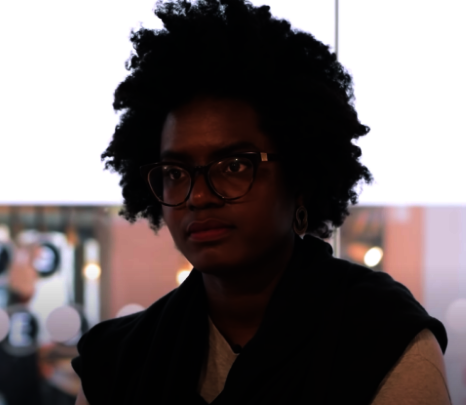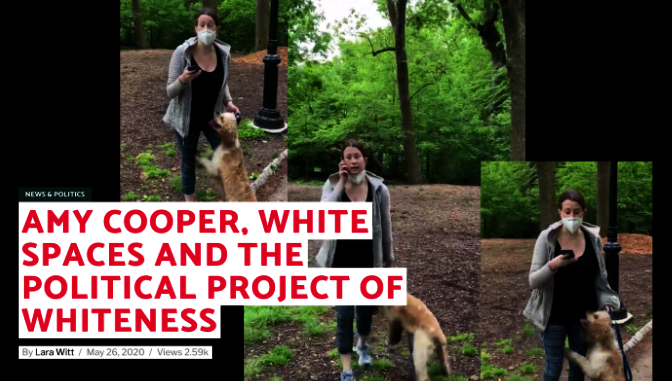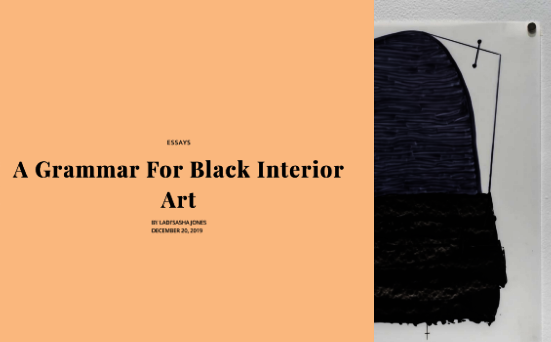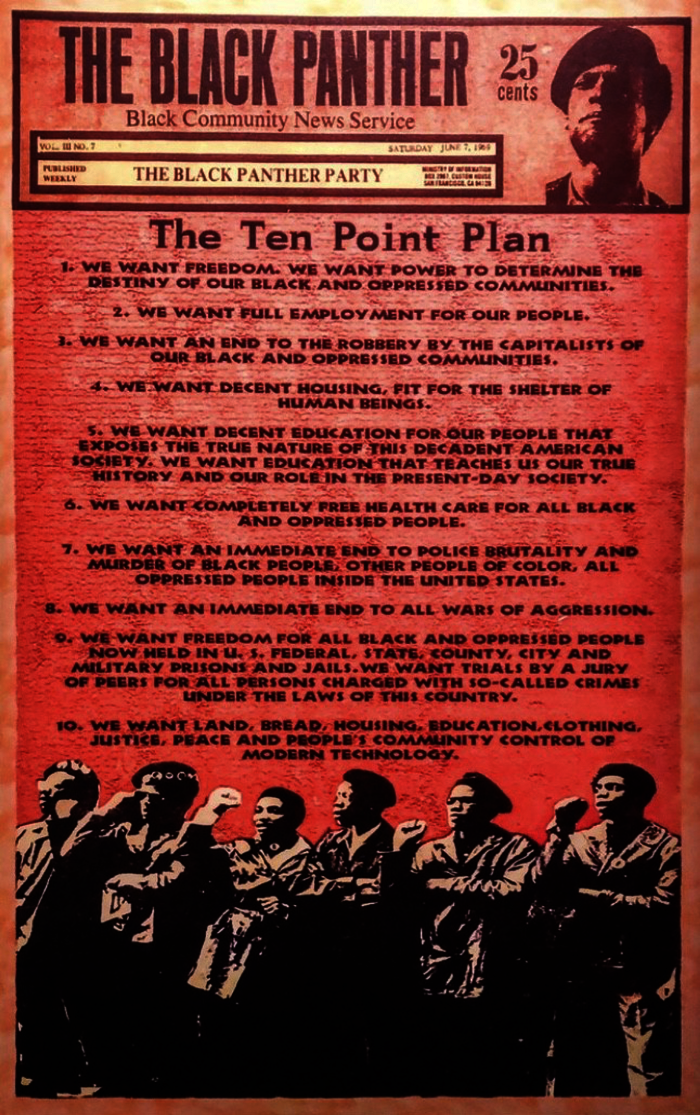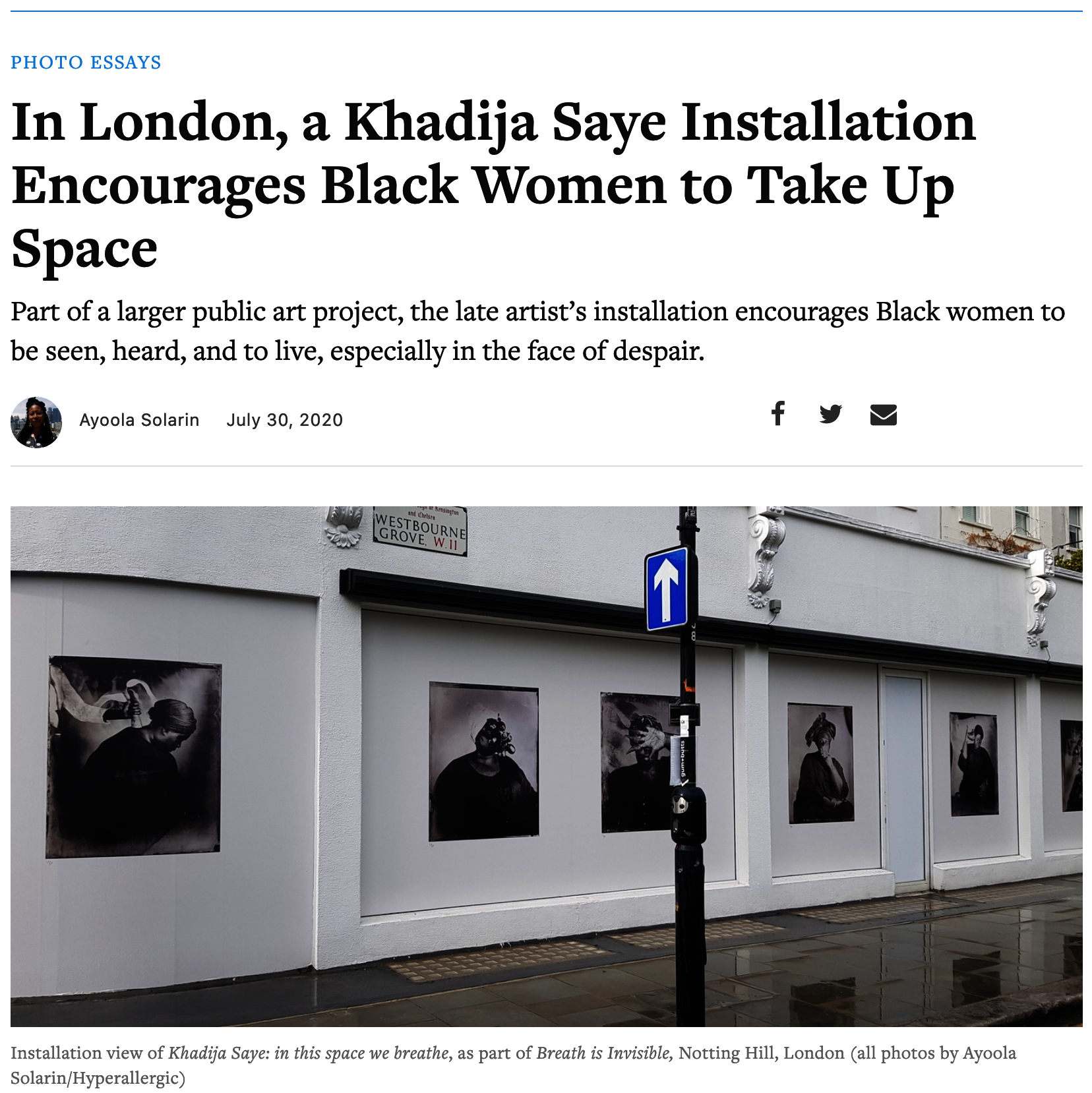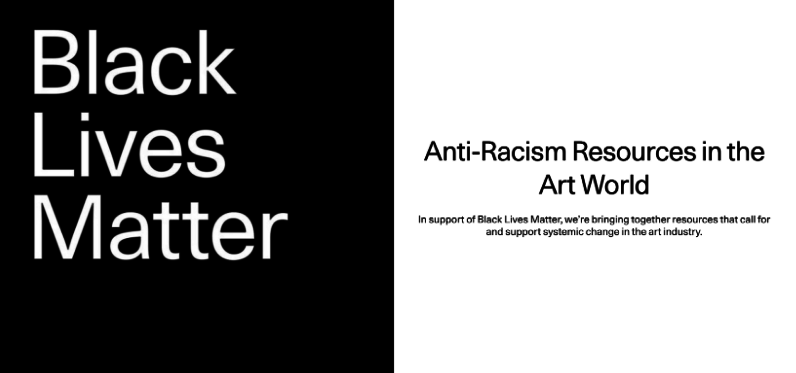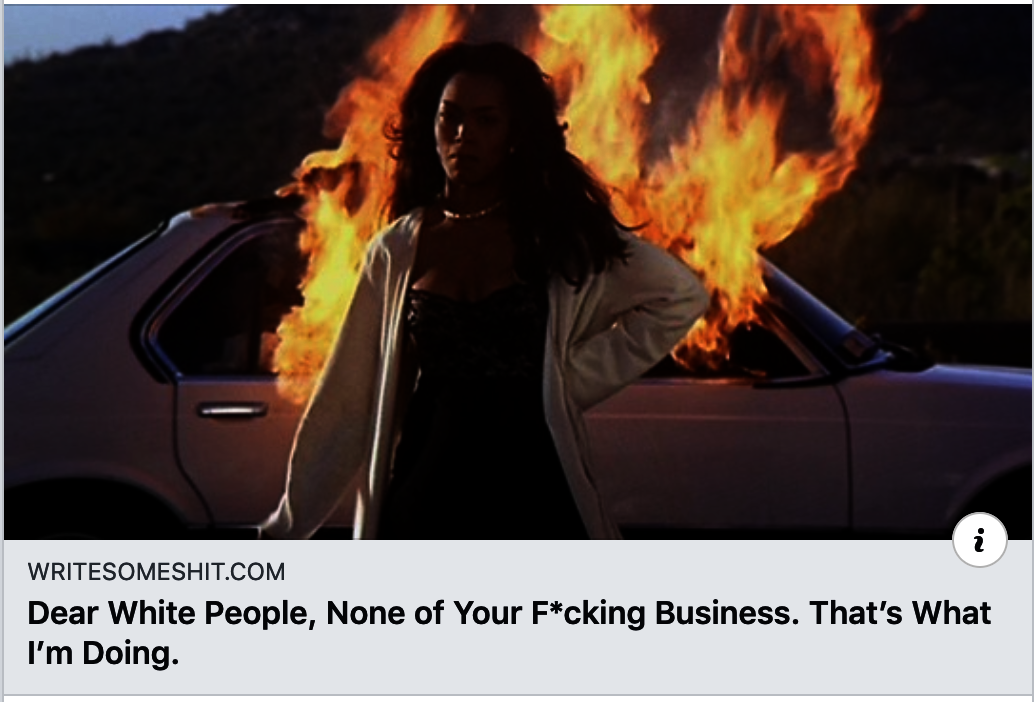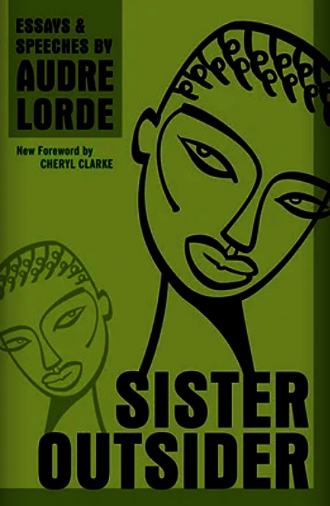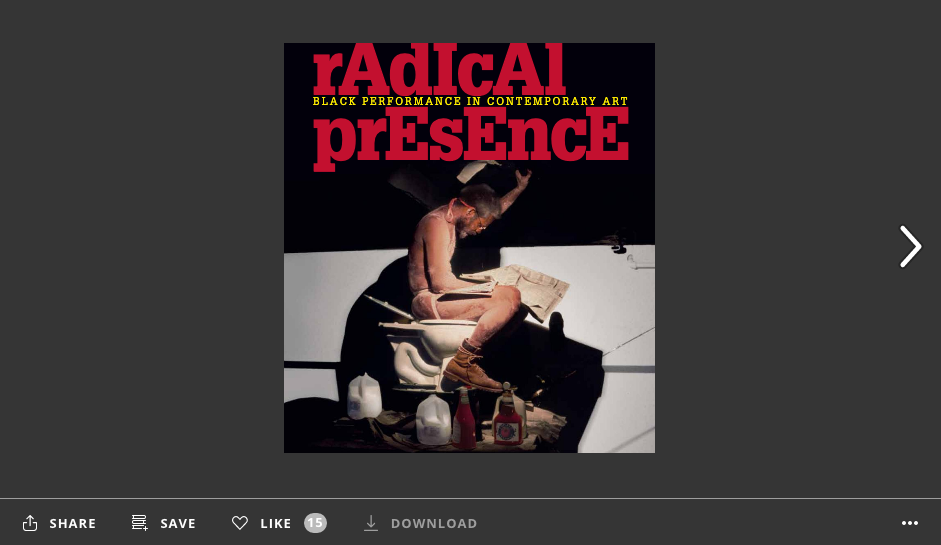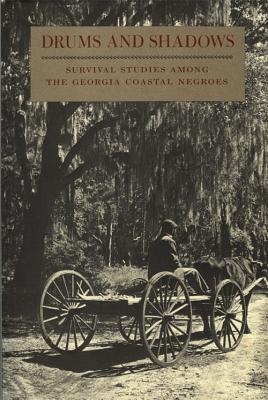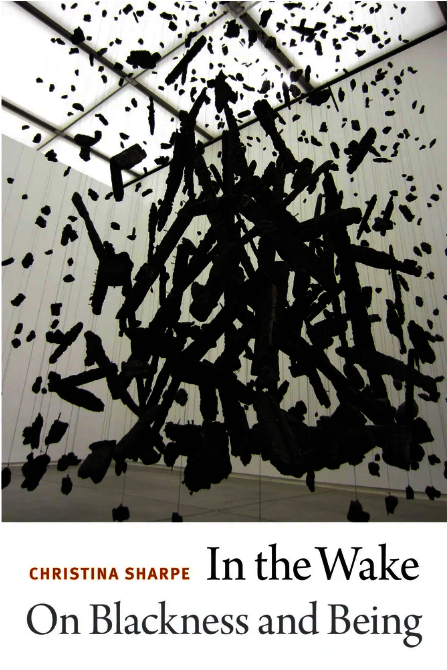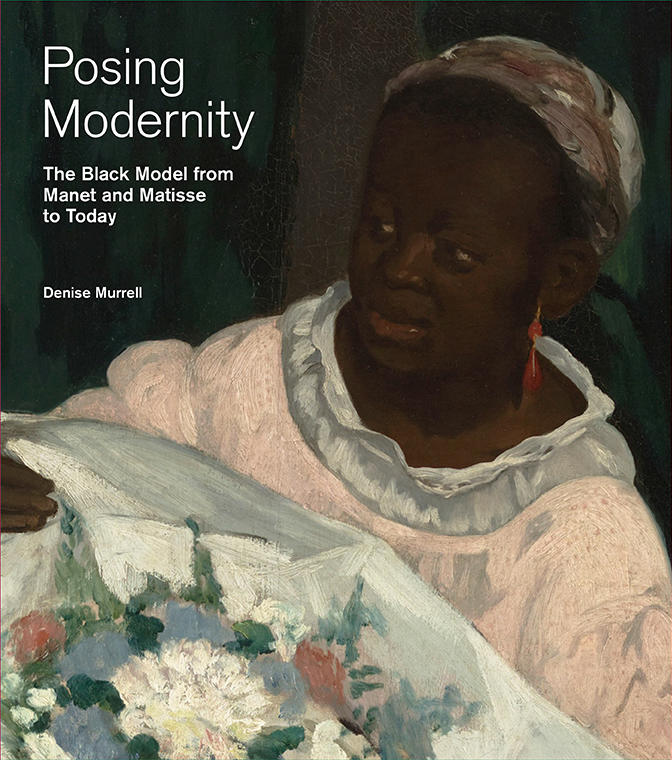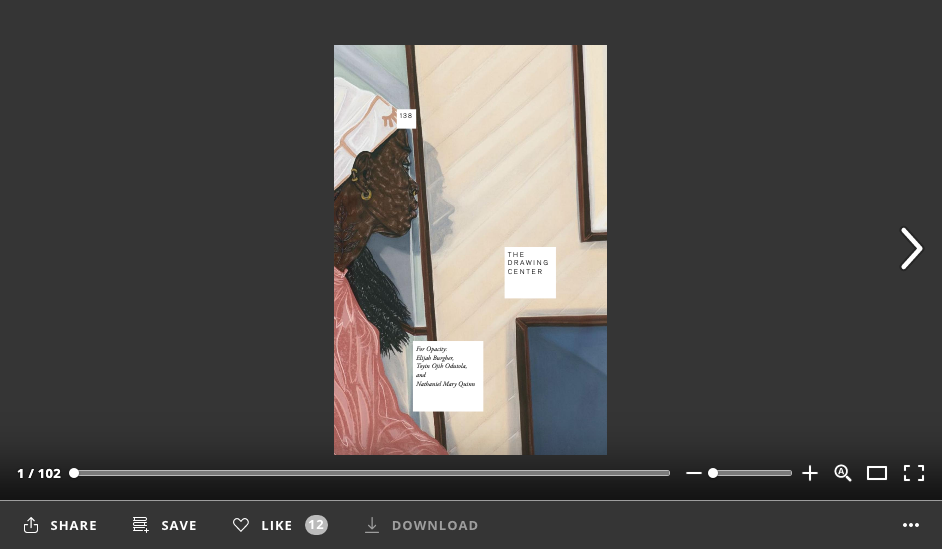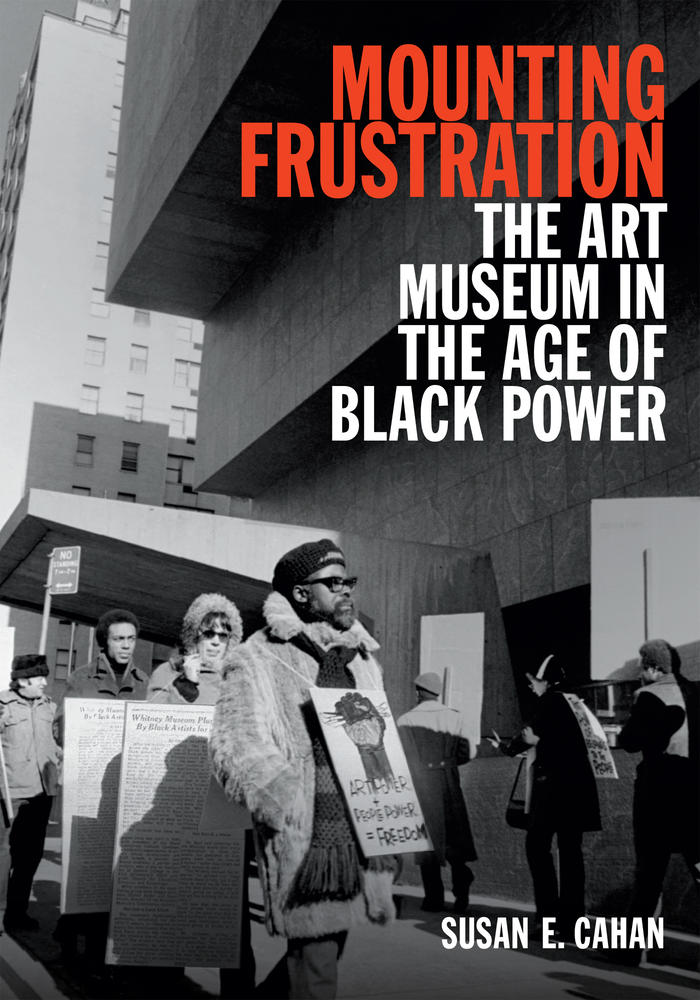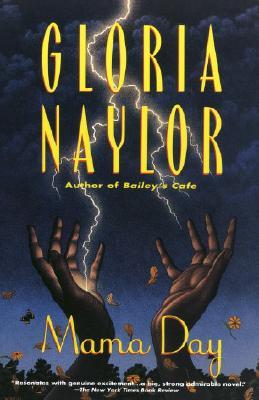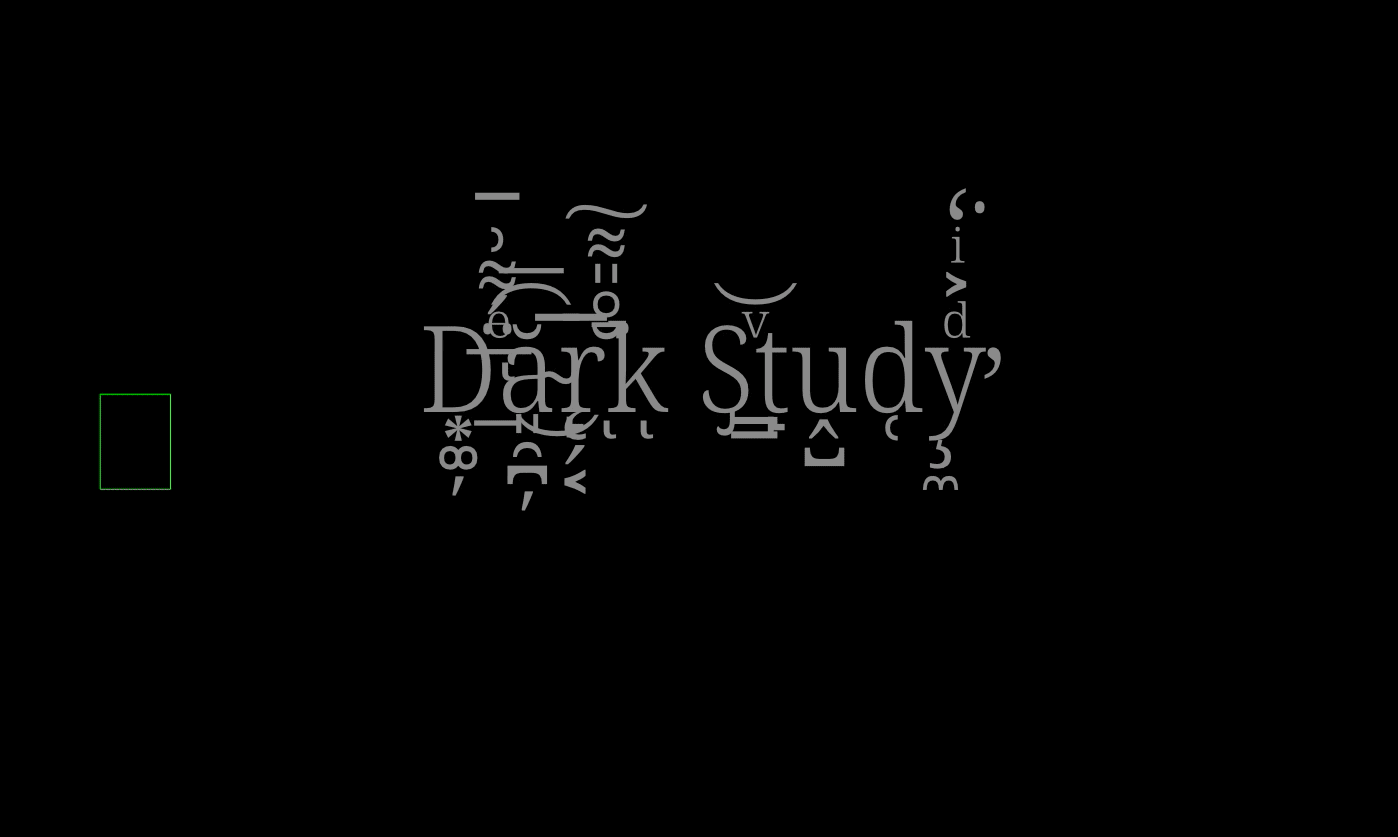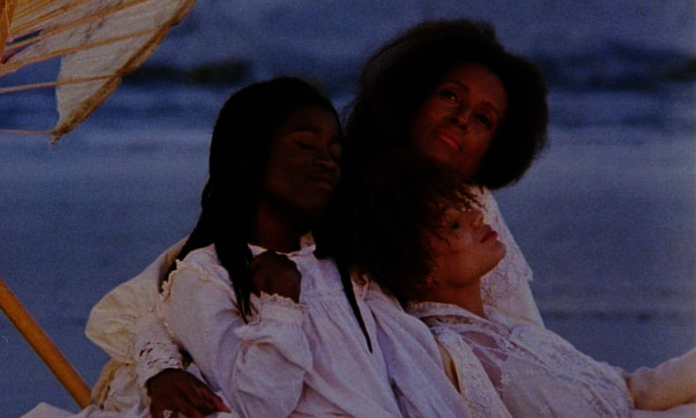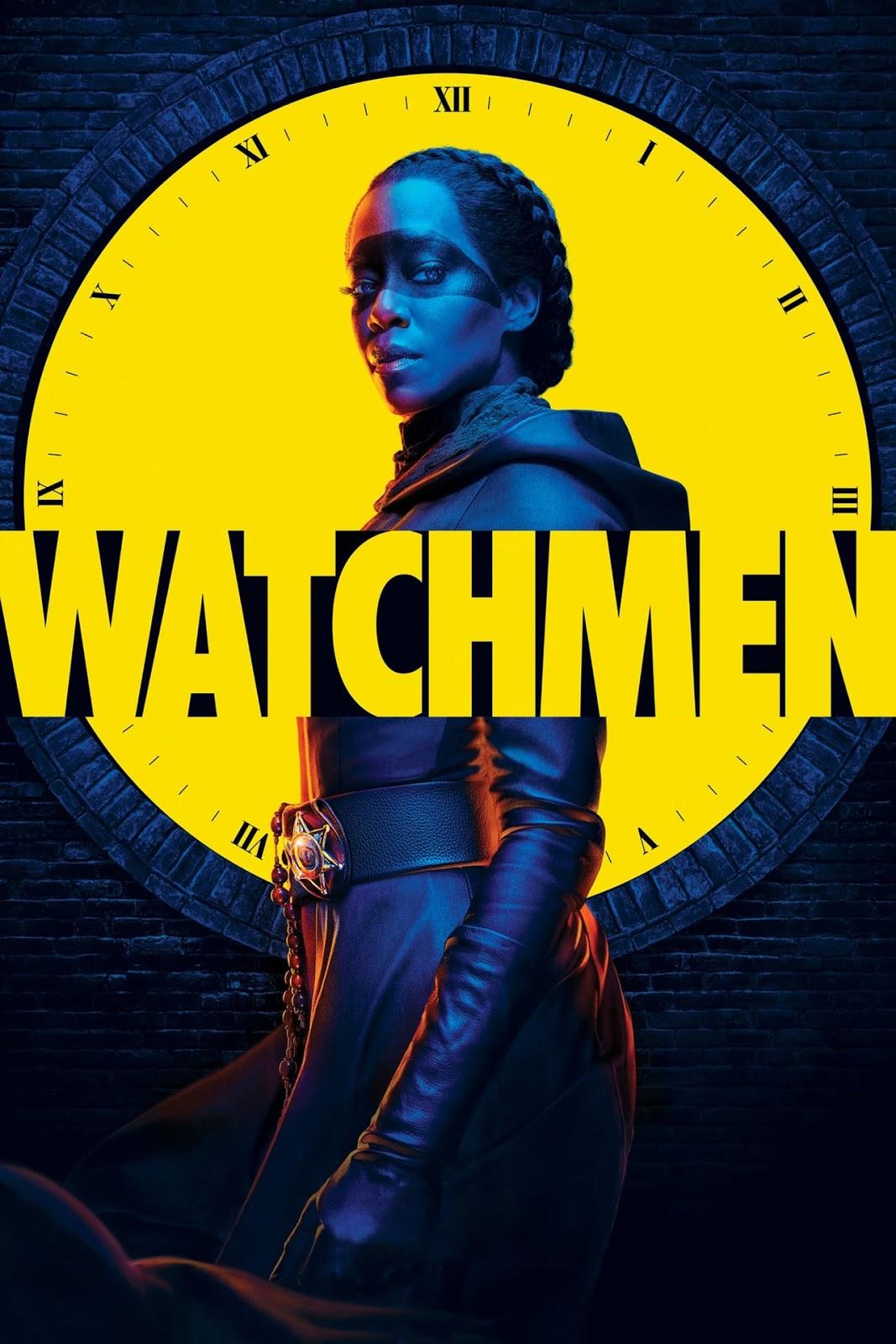Image
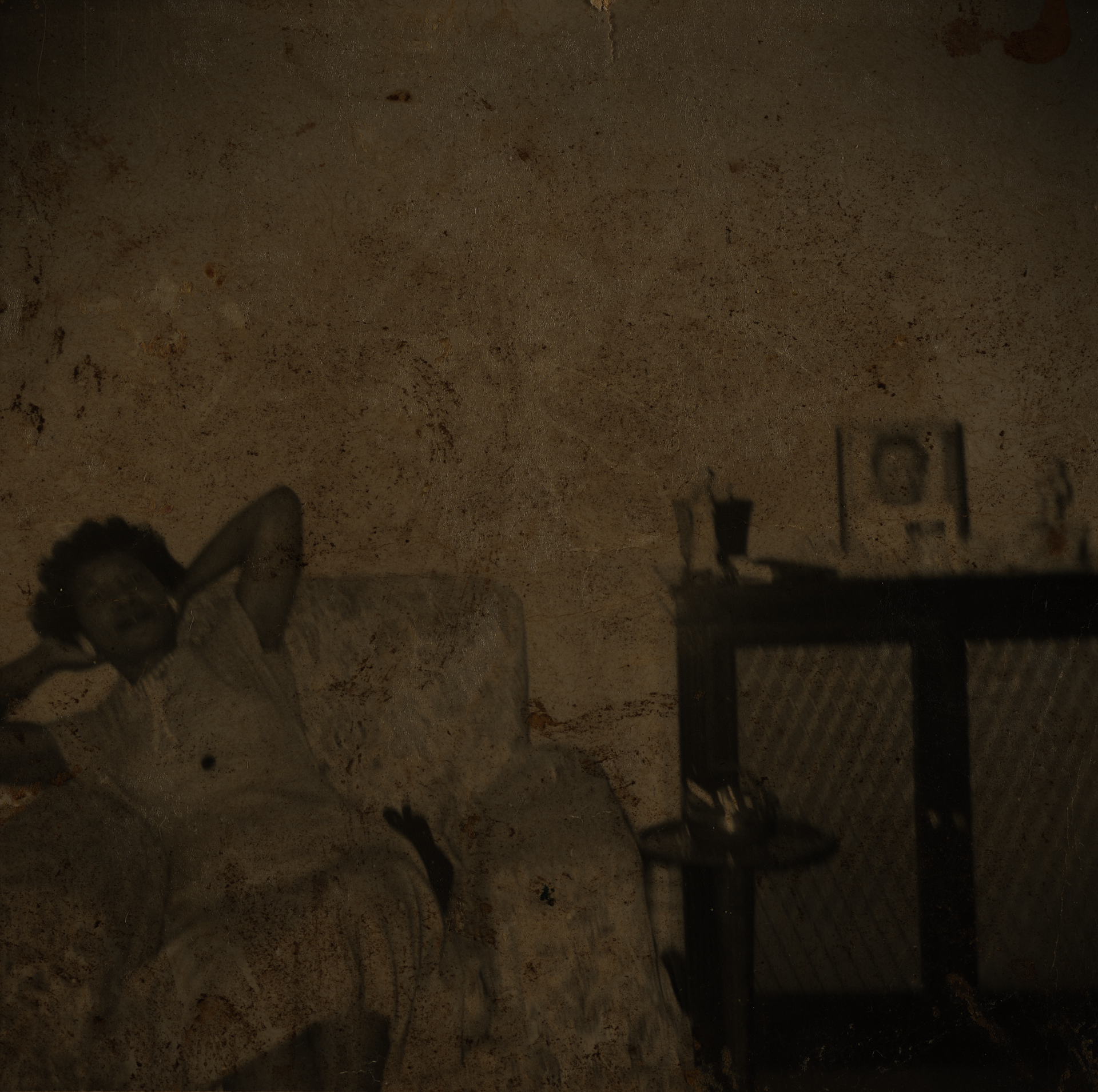
Defying the Shadow
Reading List
compiled by Anita N. Bateman, PhD
American, Untitled, ca. 1950s-1960s
Gift of Peter J. Cohen in honor of Luke Cohen,
RISD BFA 1971, BArch 1972, Architecture
RISDM 2001.61.13
The Defying the Shadow reading list is not exhaustive, and serves as an incomplete reference guide to ideas and frameworks that give context to the exhibition’s premise. The format was inspired by Jaamil Olawale Kosoko’s Chameleon: A Syllabus for Survival.
Video↑
Image
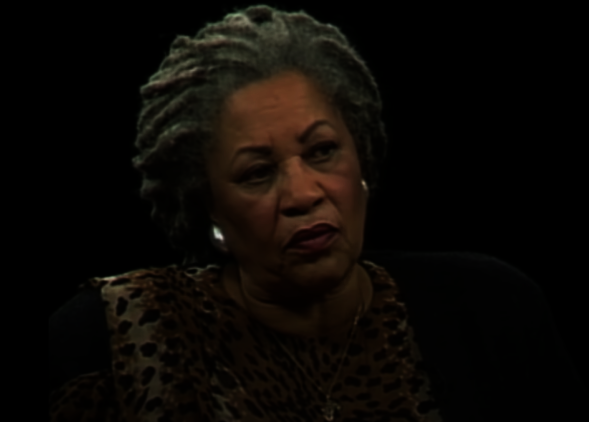
Image
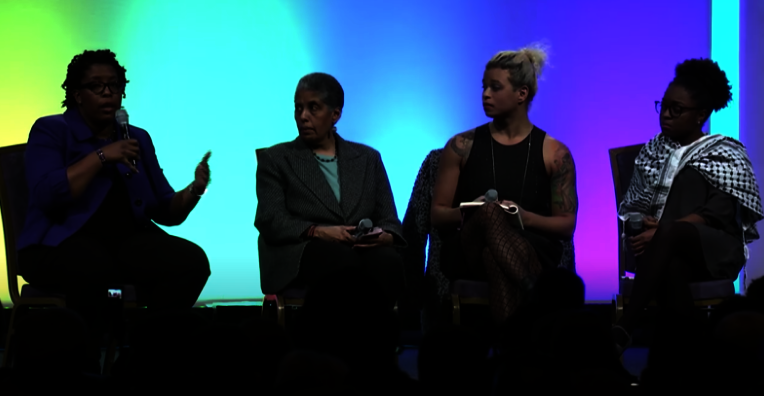
Image
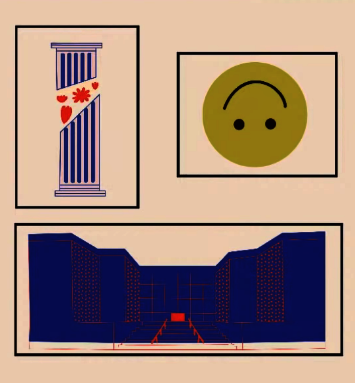
DOCUMENTARY EXCERPT
Fannie Lou Hamer in The Heritage of Slavery
CBS News, Film Associates / 1968
Image
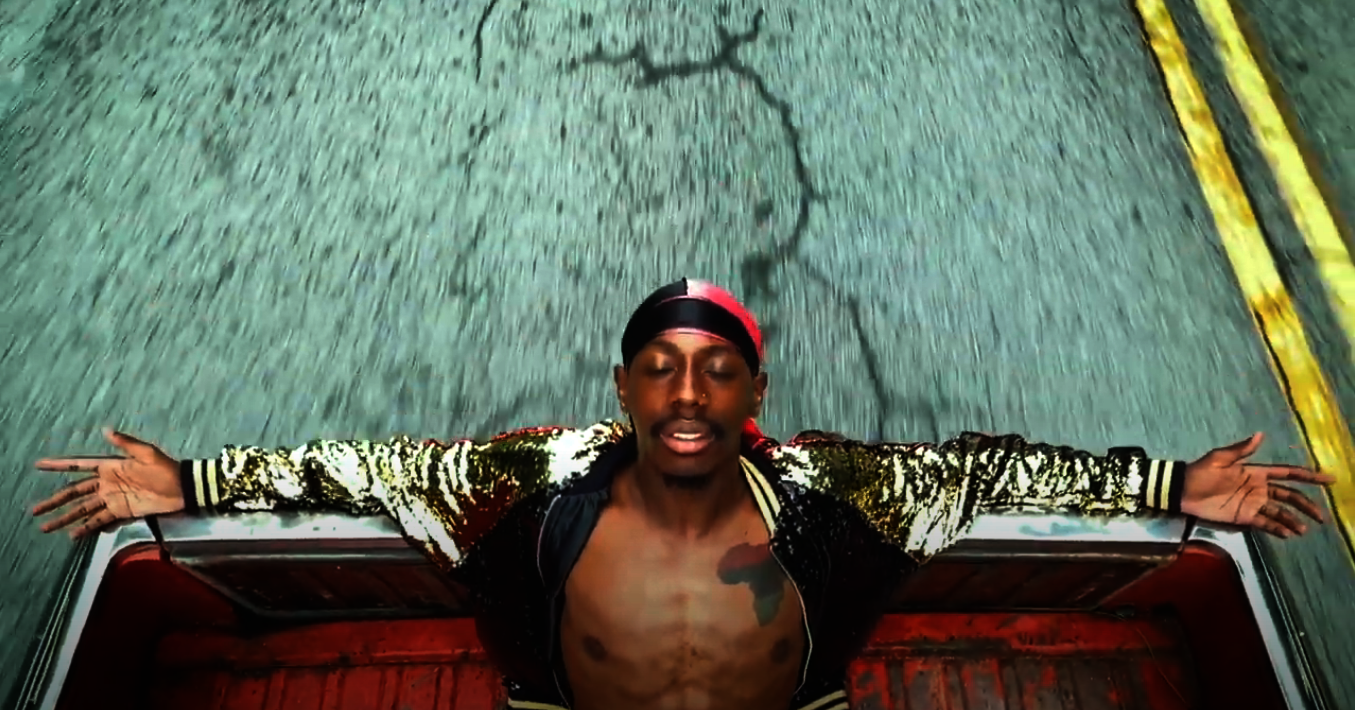
SHORT FILM & INSTALLATION
Dr. Fahamu Pecou, We Can’t Cop Cars Without Seeing Cop Cars
Art on the Atlanta Beltline / 2020
Read More about the art installation that pairs with the film.
Image
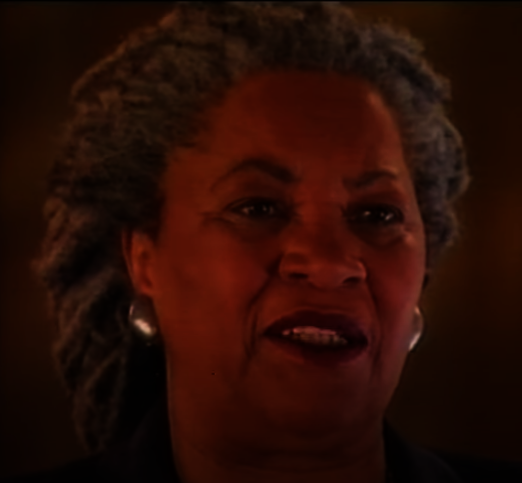
Image
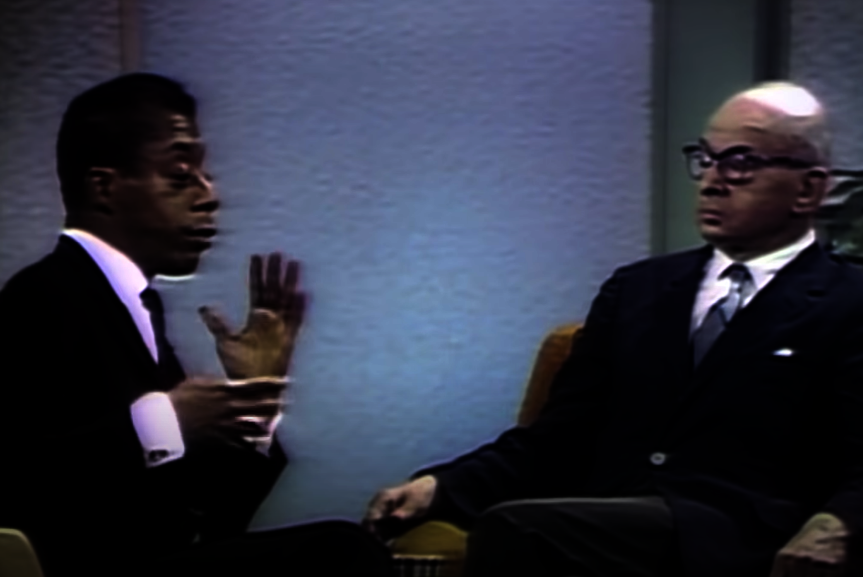
Image
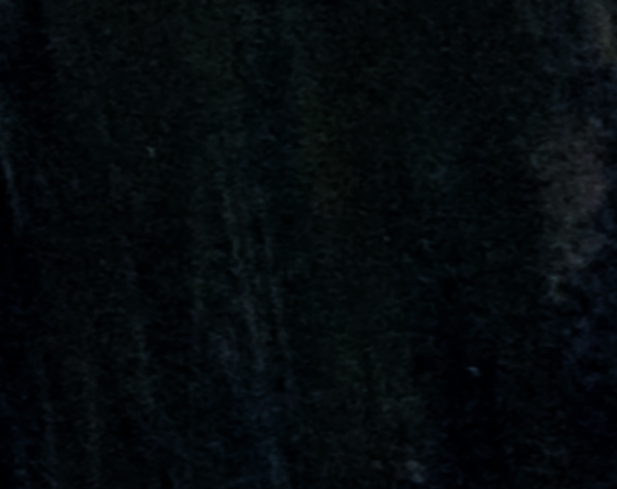
Image
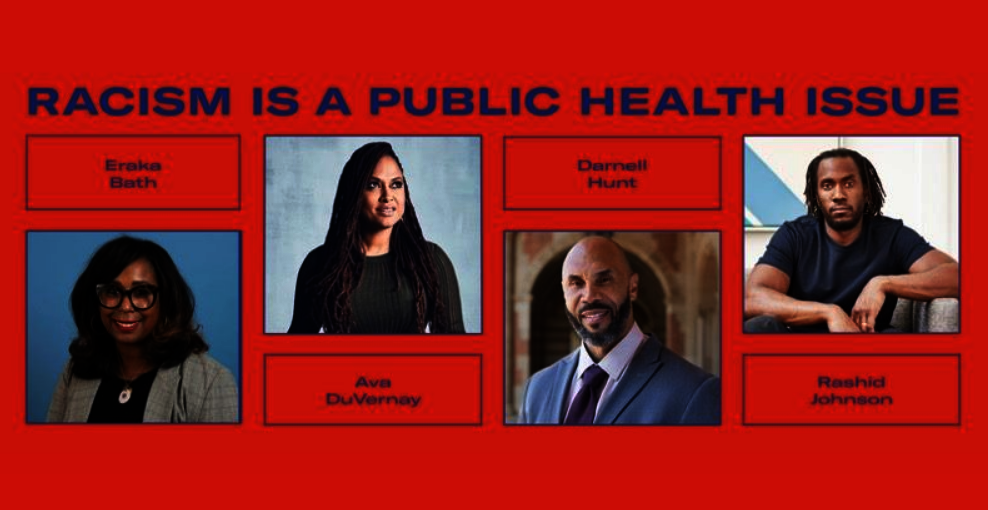
POETRY READING
Lucille Clifton, “Won't You Celebrate With Me?”
WGBH / 2014
Image
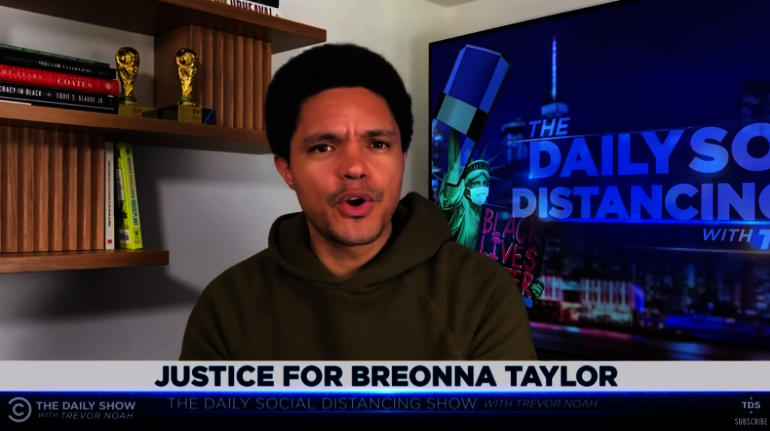
Image
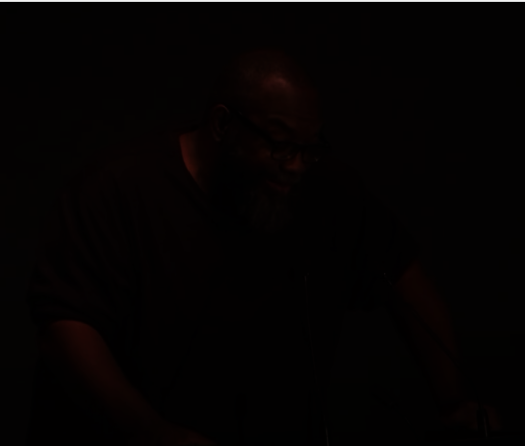
Image
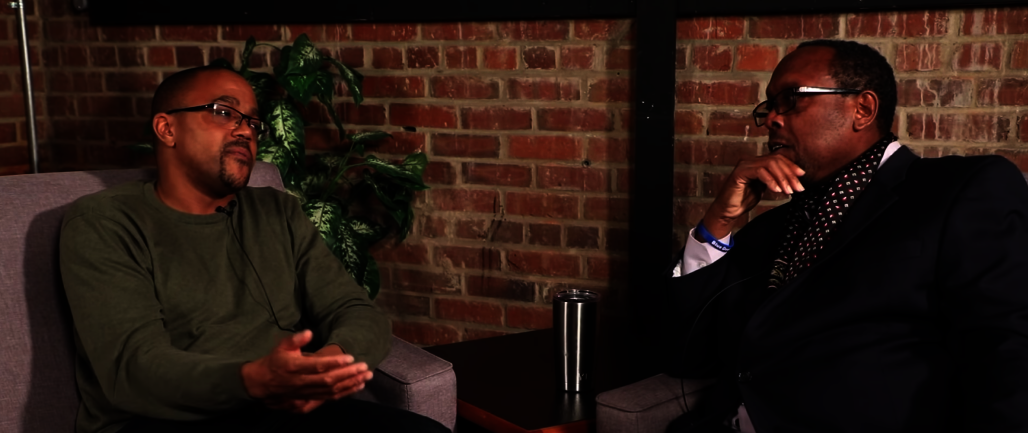
The “absent” but imperializing “white eye;” the unmarked position from which all these ‘observations’ are made and from which, alone, they make sense. This is the history of slavery and conquest, written, seen, drawn and photographed by The Winners. They cannot be read and made sense of from any other position. The “white eye” is always outside the frame—but seeing and positioning everything within it.
Stuart Hall, “The Whites of Their Eyes” in Gender, Race, and Class in Media / Sage / 1995
SPEECH
Ravyn Wngz, BLM Toronto Speech
Posted by Chicago Teacher’s Union / CP24 / 2020
Image
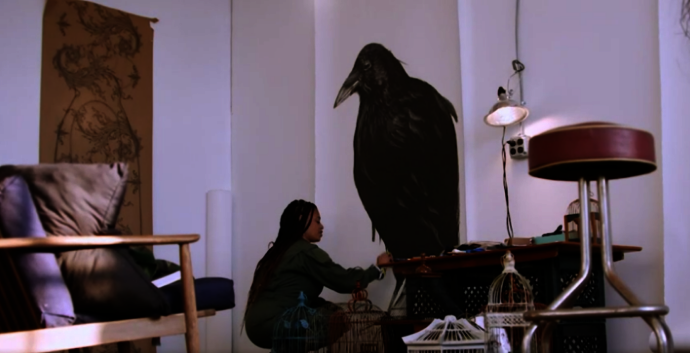
PROFILE
Artist Sabrina Nelson
PBS / 2020
MORE VIDEOS
Trevor Noah, Reparations & White Privilege—Between the Scenes
The Daily Show / 2019
Danny Glover, Ta-Nehisi Coates, House Hearing About Slavery Reparations
Washington Post / 2019
Professor Eddie Glaude
MSNBC This Is Us / 2019
Akala, Racism in the UK
BBC / 2015
Malcolm X, Who Taught You to Hate Yourself
Daily Motion / 1962
Essays↑
Image
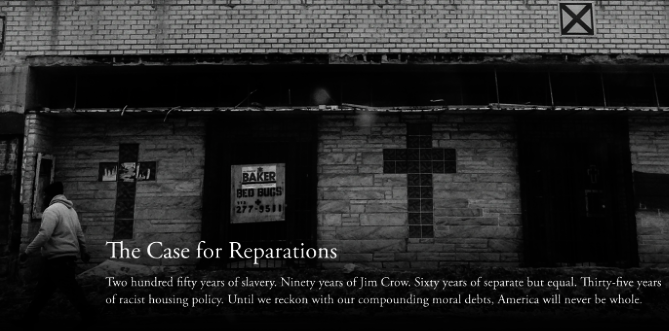
Image
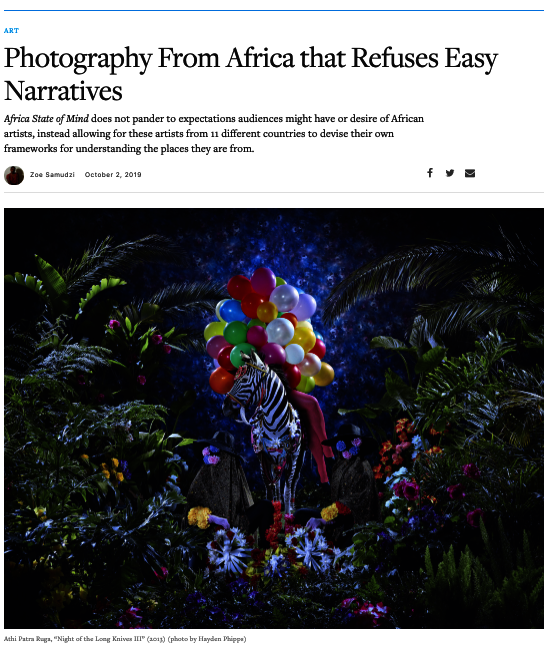
Image
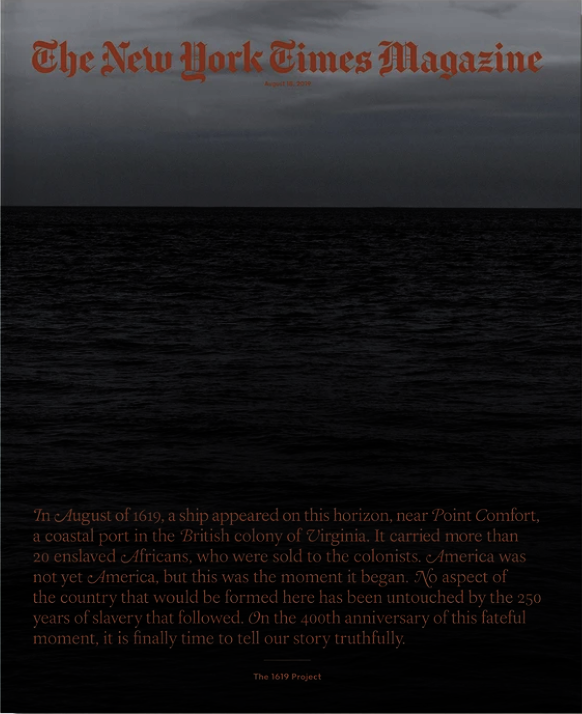
MORE ESSAYS
Aria Dean, “Closing the Loop”
The New Inquiry / 2016
The Combahee River Collective Statement
1977
“A Timeline of Events That Led to the 2020 ‘Fed Up’-rising”
The Root / 2020
Thomas DeFrantz, “I AM BLACK (you have to be willing to not know)”
Theater / 2017
Anthony James Williams, “What Do We Do With White Folks?”
Medium / 2019
Rachel Cargle, “When Feminism Is White Supremacy in Heels”
Harper’s Bazaar / 2018
Christopher Joseph Lee, “Opacity”
Art Papers / 2020
Nana Adusei-Poku, “On Being Present Where You Wish to Disappear”
E-flux / 2017
Vinson Cunningham, “The Argument of ‘Afropessimism’”
New Yorker / 2020
Tina Campt, “Black Visuality and the Practice of Refusal”
Women & Performance / 2019
Édouard Glissant, “For Opacity,” in Poetics of Relation
University of Michigan Press / 1990
Toni Morrison, “The Site of Memory”
Inventing the Truth: The Art and Craft of Memoir / 1995
James Baldwin, “An Open Letter to My Sister, Miss Angela Davis”
New York Review of Books / 1970
Nicole J. Caruth, “In the Shadows of Our Ancestors”
Walker / 2019
“After Whitewalling: Aruna D’Souza and Nisa Mackie on Art, Race, and Protest”
Walker / 2018
Poetry↑
Blackness is unviewable by the white spectator. The white spectator simply does not have the range to see blackness for what it is, isn’t that basic Fanon? Whiteness sees only tropes, never humanity, only reduction, never life. Whiteness is incapable of understanding or rly truly acknowledging the humanity of black people because race has been constructed, and so many layers in between, to obscure it; and blackness is thrust further into an opacity, or an unknowability.
Gwendolyn Brooks, Blacks
Third World Press / 1994
t’ai freedom ford, & more black
Augury Books / 2019
Nikki Giovanni, The Collected Poetry of Nikki Giovanni: 1968-1998
Harper Perennial / 2007
Rachel Eliza Griffiths, Mule and Pear
New Issues Poetry & Prose / 2011
Alexis Pauline Gumbs, Spill: Scenes of Black Feminist Fugitivity
Duke University Press / 2016
June Jordan, “Poem for South African Women”
Passion / Beacon / 1980
Claude McKay, Harlem Shadows
Harcourt, Brace, and Company / 1922
Chelsea McQueen, “A Spell to Break Your Chains”
Root Work Journal / 2020
Claudia Rankine, Citizen: An American Lyric
Graywolf Press / 2014
Sonia Sanchez, Shake Loose My Skin: New and Selected Poems
Beacon Press / 2000
Danez Smith, Homie
Graywolf Press / 2020
Books↑
Image
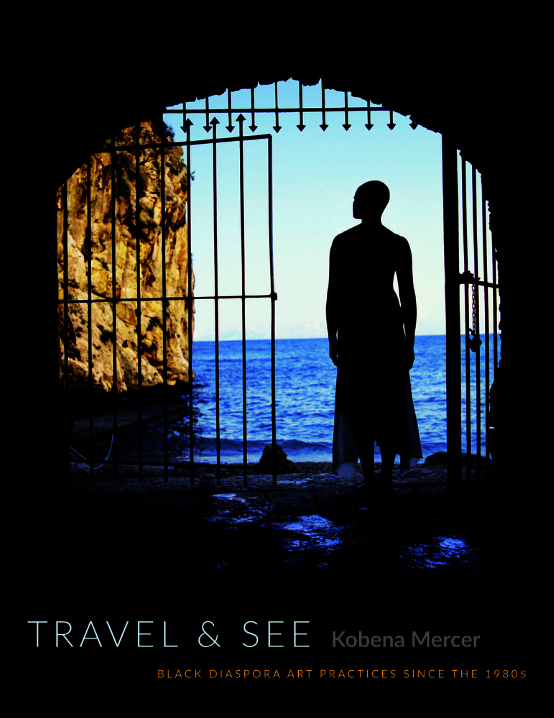
Image
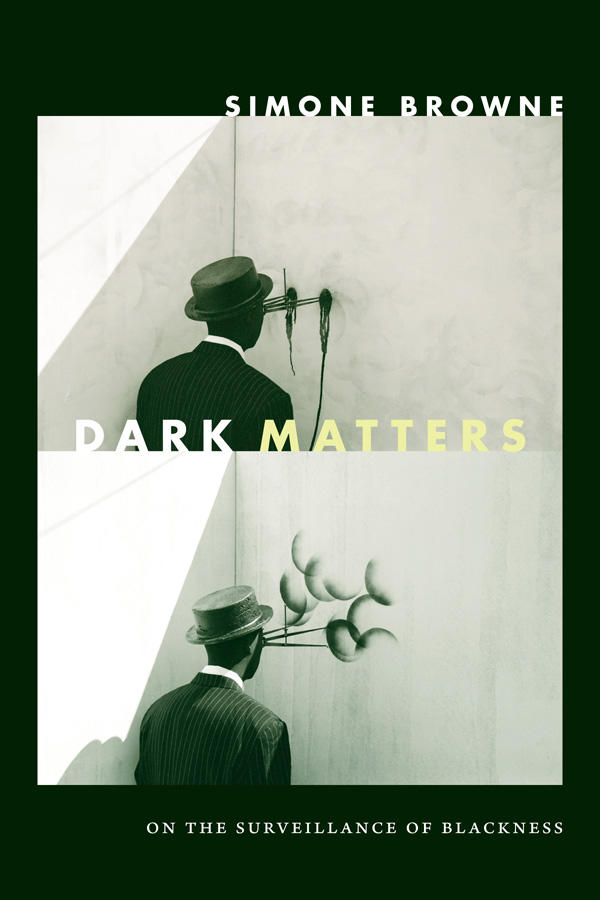
Image
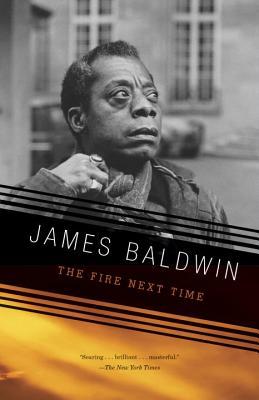
Image
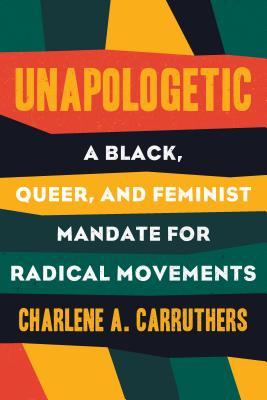
Image
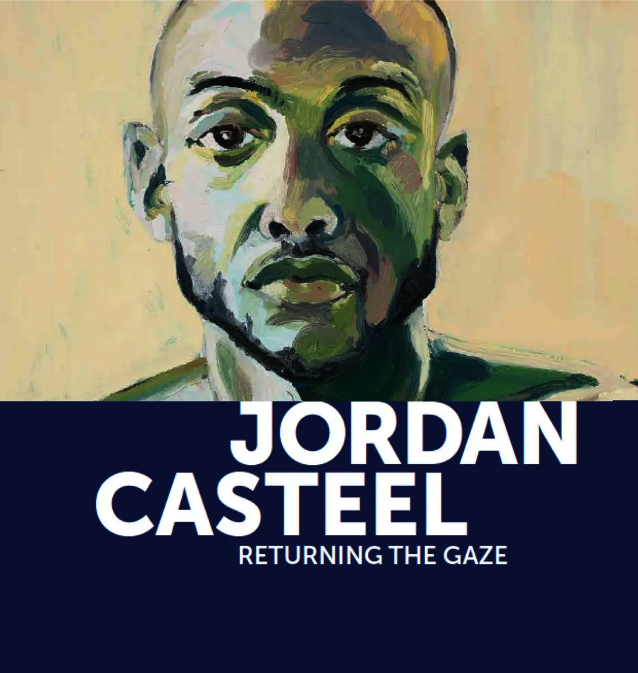
EXHIBITION CATALOGUE
Rebecca R. Hart, Jordan Casteel: Returning the Gaze
Denver Art Museum / 2019
Image
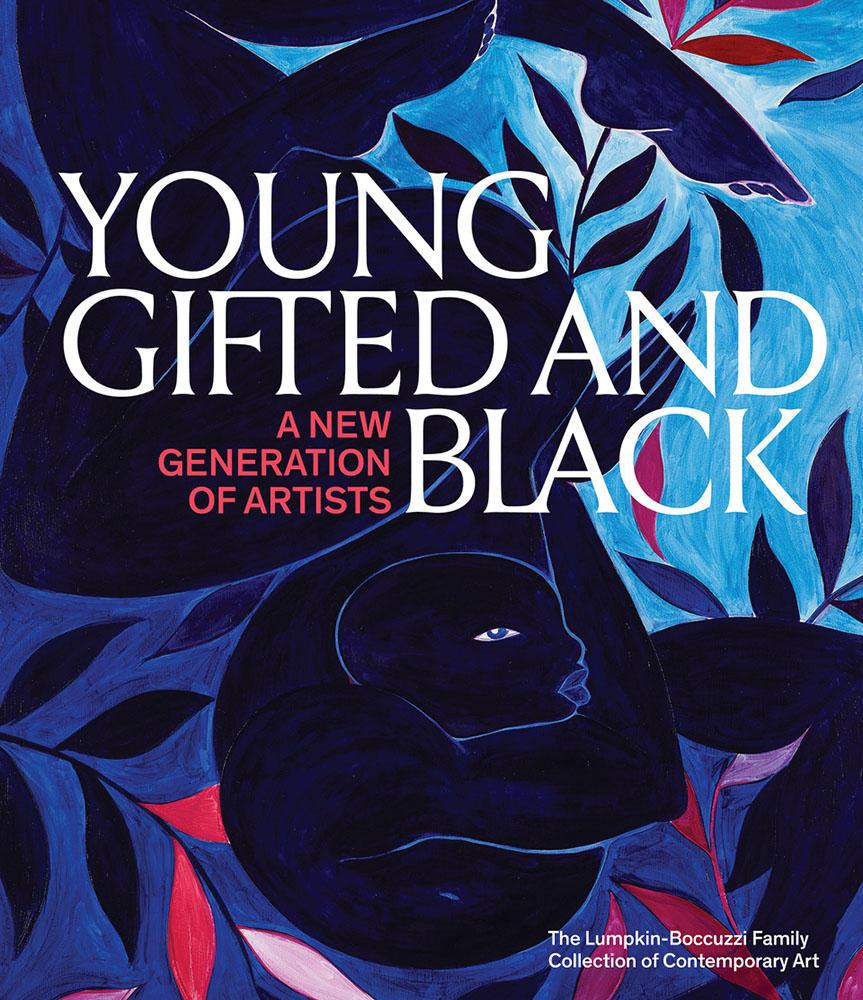
Image
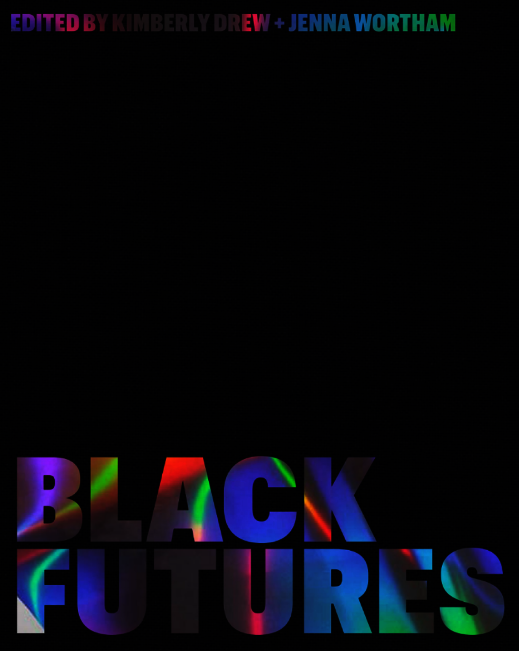
MORE BOOKS
Chinua Achebe, Things Fall Apart
Heinemann / 1958
Ama Ata Aidoo, Our Sister Killjoy
Longman / 1977
Toni Cade Bambara (ed), The Black Woman: An Anthology
New American Library / 1970
adrienne maree brown, Emergent Strategy
AK Press / 2017
adrienne maree brown, Pleasure Activism
AK Press / 2019
Anna Julia Cooper, A Voice from the South
Aldine Printing House / 1892
Brittney Cooper, Eloquent Rage: A Black Feminist Discovers Her Superpower
Picador USA / 2018
Angela Davis, Women, Race, & Class
Vintage / 1981
W.E.B. Du Bois, The Souls of Black Folks
A. C. McClurg & Co / 1903
Ralph Ellison, Invisible Man
Random House / 1952
Frantz Fanon, Black Skin, White Masks
Grove Press / 1952
Paul Gilroy, The Black Atlantic: Modernity and Double Consciousness
Harvard University Press / 1993
Frances E.W. Harper, Iola Leroy, Or, Shadows Uplifted
Garrigues Brothers / 1892
bell hooks, Ain’t I A Woman?
South End Press / 1981
— , All About Love: New Visions
Harper / 2000
— , Art on My Mind: Visual Politics
New Press / 1995
Zora Neale Hurston, Mules and Men
J.B. Lippincott / 1935
C.L.R. James, The Black Jacobins
Secker & Warburg Ltd / 1938
Mikki Kendall, Hood Feminism: Notes from the Women That a Movement Forgot
Viking / 2020
Malcolm X, Alex Haley, The Autobiography of Malcolm X
Grove Press / 1965
Natasha Marin (ed.), Black Imagination: Black Voices on Black Futures
McSweeney’s / 2020
Toni Morrison, The Bluest Eye
Holt, Rinehart and Winston / 1970
— , Sula
Alfred A. Knopf / 1973
— , The Black Book
Random House / 1974
— , Song of Solomon
Alfred A. Knopf / 1977
— , Beloved
Alfred A. Knopf / 1987
— , Paradise
Alfred A. Knopf / 1997
— , Playing in the Dark: Whiteness and the Literary Imagination
Harvard University Press / 1992
— , The Source of Self-Regard: Essays, Speeches, Meditations
Alfred A. Knopf / 2019
Fred Moten, Stefano Harney, The Undercommons: Fugitive Planning & Black Study
Autonomedia / 2013
Richard J. Powell, Black Art: A Cultural History
Thames & Hudson / 2003
Ishmael Reed, Mumbo Jumbo
Doubleday / 1972
Cedric J. Robinson, Black Marxism: The Making of the Black Radical Tradition
Zed Books / 1983
Assata Shakur, Assata: An Autobiography
Lawrence Hill Books / 1988
Ntozake Shange, Sassafrass, Cypress & Indigo
St. Martin's Press / 1982
Jean Toomer, Cane
Boni & Liveright / 1923
Alice Walker, In Search of Our Mothers' Gardens: Womanist Prose
Harcourt / 1983
Frank B. Wilderson III, Afropessimism
Liveright Publishing Corporation / 2020
Isabella Wilkerson, Caste: The Origins of Our Discontents
Random House / 2020
Web↑
EXPERIMENTAL PROGRAM
Dark Study
2020
Film & TV↑
DOCUMENTARY
13th, Ava Duvernay (dir.)
Netflix / 2016
FEATURE FILM
Black Orpheus, Marcel Camus (dir.)
Lopert Pictures / 1959
SUPERHERO FILM
Black Panther, Ryan Coogler (dir.)
Walt Disney Studios Motion Pictures / 2018
DOCUMENTARY
Black Power Mixtape 1967-1975, Göran Olsson (dir.)
Sundance Selects / 2011
HORROR FILM
Get Out, Jordan Peele (dir.)
Universal Pictures / 2017
SHORT FILM
Happy Birthday, Marsha!, Sasha Wortzel, Tourmaline (dirs.)
2018
DOCUMENTARY
I Am Not Your Negro, Raoul Peck (dir.)
Magnolia Pictures / 2017
FEATURE FILM
Killer of Sheep, Charles Burnett (dir.)
Milestone Films / 1978
FEATURE FILM
Sankofa, Haile Gerima (dir.)
Mypheduh Films / 1993
Instagram↑
COMMUNITY ORGANIZING CENTER
@audrelordeproject
ADVOCACY
@changethemuseum
AUTHOR/ACTIVIST/ADVOCATE
@feministajones
AUTHOR/SPEAKER/TEACHER
@laylafsaad
CHANGEMAKER/MODEL
@munroebergdorf
WRITER/ACTIVIST/EDUCATOR
@sonyrareneetaylor
AUTHOR/ACADEMIC/ACTIVIST
@rachel.cargle
COMMUNITY ORGANIZATION
@thenapministry
Image
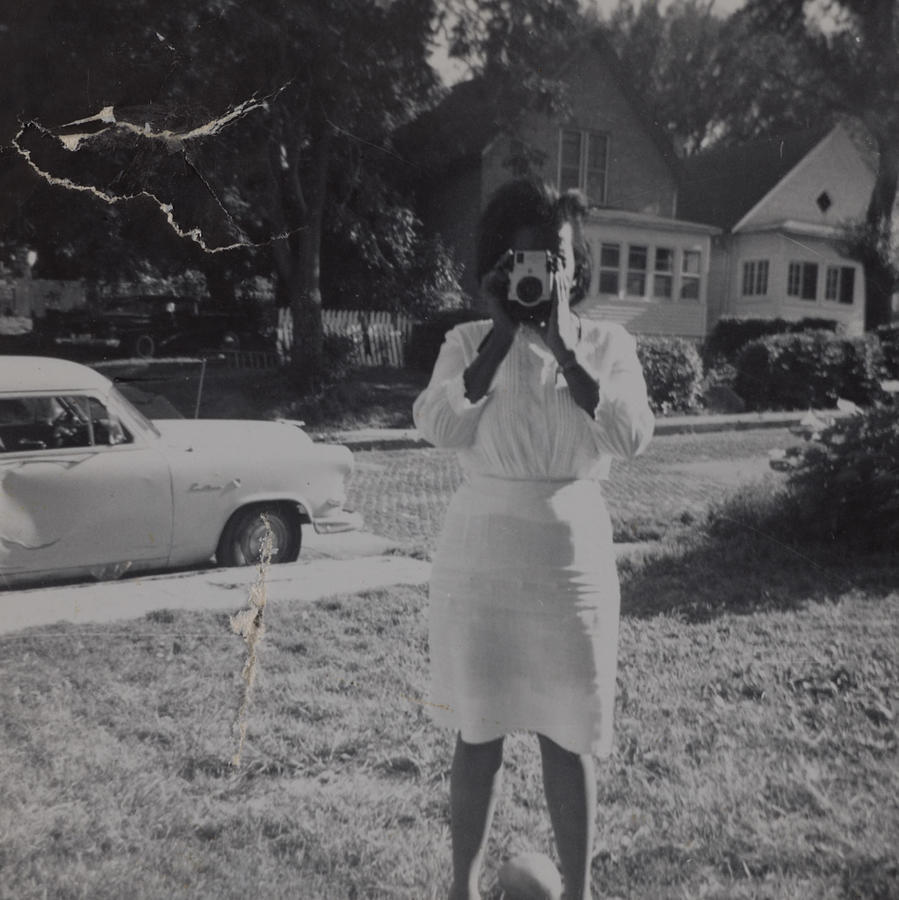
American, Untitled, ca. 1940s-1950s
Gift of Peter J. Cohen in honor of Luke Cohen, RISD BFA 1971, BArch 1972, Architecture, 2018.61.10
Activism↑
On one side there is a need to see ourselves reflected in positions of agency power and self determination in a world which does not really wish to see us thrive at all and on the other, an understanding that representation is itself a system of power which is built not to liberate, but to exclude, trap and to uphold a capitalist patriarchal heteronormative and white supremacist status quo.
Christopher Kirubi, Those Institutions Should Belong To Us / PSS / 2019
Cite this article as
Chicago Style
MLA Style
Shareable Link
Copy this page's URL to your clipboard.
Featured Objects
American, Untitled, ca. 1950s-1960s
Gift of Peter J. Cohen in honor of Luke Cohen, RISD BFA 1971, BArch 1972, Architecture, RISDM 2001.61.13
American, Untitled, ca. 1940s-1950s
Gift of Peter J. Cohen in honor of Luke Cohen, RISD BFA 1971, BArch 1972, Architecture, RISDM 2018.61.10
American, “Some Kids,” ca. mid 1950s-1960s
Gift of Peter J. Cohen in honor of Luke Cohen, RISD BFA 1971, BArch 1972, Architecture, RISDM 2018-61-83
American, Untitled, ca. 1960s
Gift of Peter J. Cohen in honor of Luke Cohen, RISD BFA 1971, BArch 1972, Architecture, RISDM 2018-61-12
American, Untitled, ca. 1940s
Gift of Peter J. Cohen in honor of Luke Cohen, RISD BFA 1971, BArch 1972, Architecture, RISDM 2018-61-9
American, Untitled, ca. 1930
Gift of Peter J. Cohen in honor of Luke Cohen, RISD BFA 1971, BArch 1972, Architecture, RISDM 2018-61-4
American, Untitled, ca. 1910s
Gift of Peter J. Cohen in honor of Luke Cohen, RISD BFA 1971, BArch 1972, Architecture, RISDM 2018-61-8
American, Untitled, ca. 1950s-1960s
Gift of Peter J. Cohen in honor of Luke Cohen, RISD BFA 1971, BArch 1972, Architecture, RISDM 2018-61-15
American, “The Last Dress,” ca. 1940s
Gift of Peter J. Cohen in honor of Luke Cohen, RISD BFA 1971, BArch 1972, Architecture, RISDM 2018-61-22
